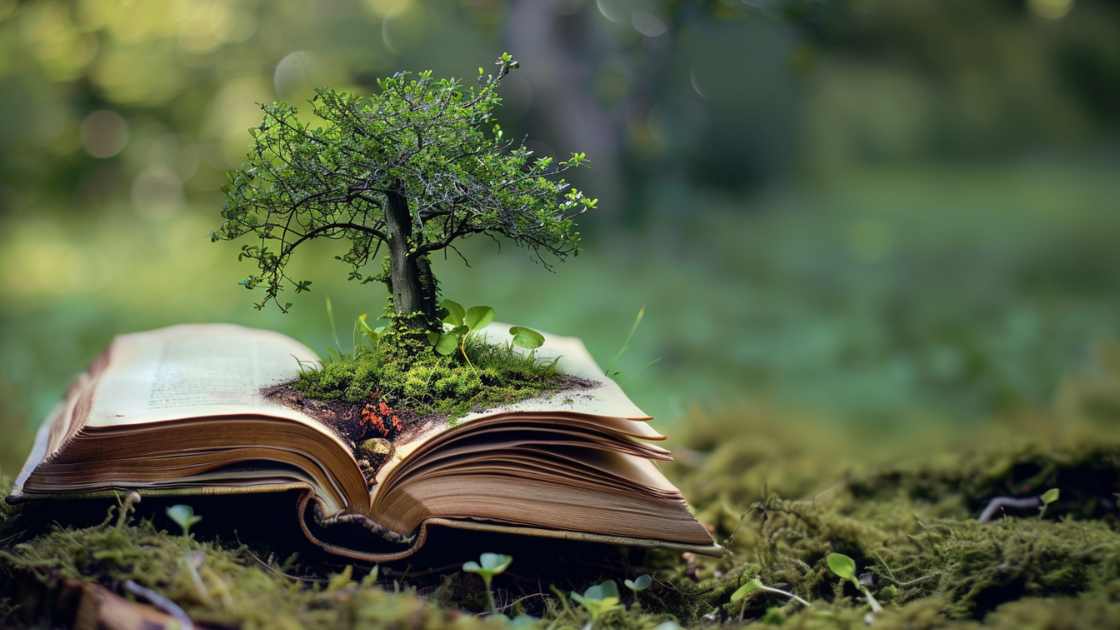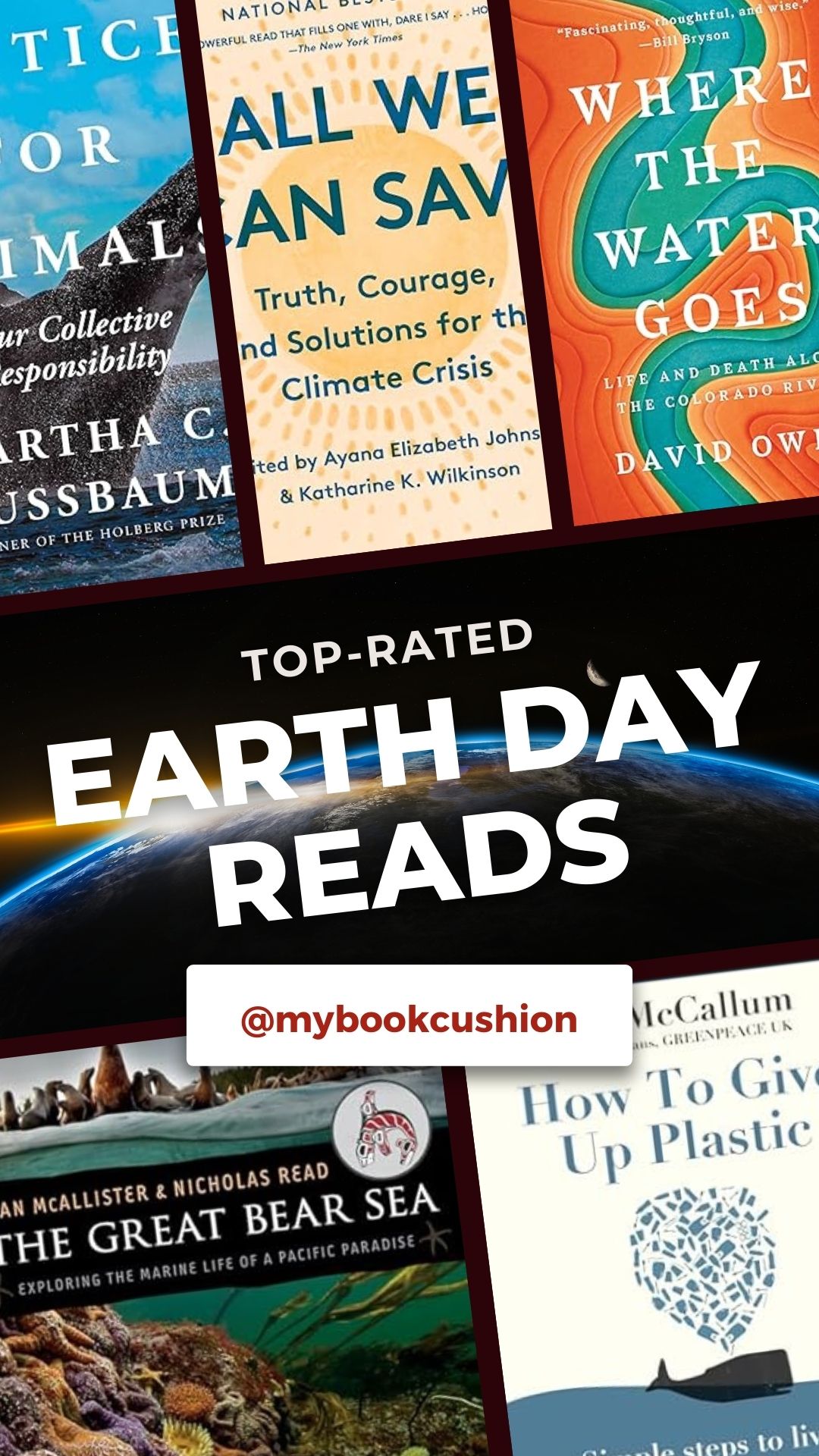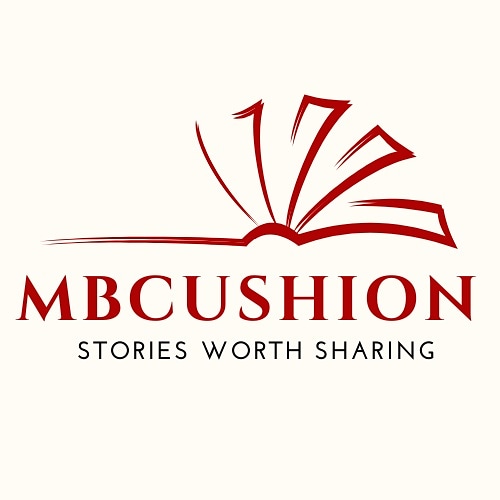
Best Books to Read for Earth Day
This year, as we approach Earth Day, let’s find ourselves into the pages of the Best Books to Read for Earth Day, each one aims to tug at our conscience in a different way.
These books are not just texts; they are cries and whispers of the earth itself, each story weaving a narrative of beauty, destruction, love, and neglect.
As we explore these selected works, you’ll come to see the Earth not just as a cause to be championed, but as a living entity that stirs deep emotional responses within us. These are not easy reads by any means. They challenge, provoke, and demand.
But then again, isn’t that what Earth Day is ultimately about?
Standing face-to-face with the uncomfortable truths and deciding not just to listen, but to act.
Love to read but the hobby is too costly?
Consider signing up for a Kindle Unlimited Membership Plan or an Audible Membership. Both options give you access to thousands of titles, including many from the mystery and thriller genres, while saving you money over time.
More New Releases in 2025
So, let’s dive in, shall we? After all, understanding our planet starts with understanding the stories that stir us to protect it.
(This article includes affiliate links. If you choose to buy a product or service through these links, I might earn a small commission at no extra cost to you!)
Table of Content
Share on Pinterest

Books About Climate Science & Environmental Awareness
Books in this section are ideal for readers looking to understand the data, science, and broader implications of climate change and environmental degradation.
The Carbon Almanac: It’s Not Too Late by The Carbon Almanac Network
“The Carbon Almanac” provides a visually engaging, data-rich exploration of climate change, showing how carbon affects food, energy, biodiversity, and health.
This groundbreaking work serves as both an educational tool and a call to action, making complex environmental issues accessible to all.
Crafted by a diverse network of contributors, it empowers readers to transcend individual efforts and drive meaningful global change.
Readers who enjoyed The Sixth Extinction by Elizabeth Kolbert or This Changes Everything by Naomi Klein will appreciate the blend of science, storytelling, and activism found in “The Carbon Almanac.”
The Uninhabitable Earth by David Wallace-Wells
Described as “this generation’s Silent Spring ,” David Wallace-Wells’s #1 New York Times bestseller presents a sobering and vividly written account of the catastrophic consequences of climate change.
Wallace-Wells blends lyrical prose and rigorous research to craft a compelling narrative that is both unsettling and unignorable.
By examining global warming’s impact on politics, technology, and human progress, The Uninhabitable Earth challenges readers to face the climate crisis while urging action.
Earth in Human Hands by David Grinspoon
Astrobiologist David Grinspoon examines humanity’s unprecedented impact on Earth’s systems, comparing it to planetary changes elsewhere to highlight our unique role in shaping the planet’s future.
Despite challenges like climate change, he presents a hopeful outlook, emphasizing innovation and adaptation as keys to preserving a thriving biosphere.
This thought-provoking book combines scientific insight and philosophical reflection, presenting a sobering yet inspiring vision of humanity’s impact and a sustainable future. Grinspoon’s optimism and call to action make it essential reading for those seeking to become conscious stewards of Earth.
Readers who enjoyed Pale Blue Dot by Carl Sagan will appreciate Grinspoon’s cosmic perspective and hopeful yet realistic approach to addressing the climate crisis.
Rising by Elizabeth Rush
Elizabeth Rush’s Rising is a critically acclaimed, lyrical account of climate change’s impact on American coastal communities.
Through immersive storytelling and firsthand testimonials, it poignantly explores loss, resilience, and adaptability in the face of rising seas.
Rising is a revelatory work on climate change, distinguished by its human perspective and blend of powerful narratives with ecological urgency.
If you loved Braiding Sweetgrass by Robin Wall Kimmerer, you will definetly love Rising.
Don’t Even Think About It by George Marshall
In Don’t Even Think About It , George Marshall delves into the psychological barriers hindering meaningful climate action, despite widespread awareness. Using insights from psychologists, scientists, and activists, he explores how cognitive biases and storytelling shape our response to the crisis.
The book povides a fresh perspective on the climate debate, focusing on the human psychology that stifles collective action.
By addressing barriers like fear, denial, and tribalism, Marshall equips readers to reframe the conversation and bridge divides, making it essential for understanding and overcoming climate inaction.
Where the Water Goes by David Owen
In Where the Water Goes , David Owen traces the Colorado River’s path, revealing the intricate water management systems that support the western U.S.
Through its journey from headwaters to depleted delta, he examines the challenges of water allocation, sustainability, and climate uncertainty in a region heavily reliant on this essential resource.
Where the Water Goes offers a fascinating yet sobering examination of water usage in America, blending vivid storytelling with meticulous research to reveal the often-overlooked realities of this critical resource.
Perfect for environmental enthusiasts, it underscores the delicate balance sustaining modern life and calls for sustainable solutions. Fans of Cadillac Desert or The Big Thirst will find Owen’s insights equally compelling.
Books About Solutions, Innovation & Policy
These books explore actionable ideas, sustainable technologies, and the roles individuals, governments, and businesses can play in climate solutions.
How to Avoid a Climate Disaster by Bill Gates
How to Avoid a Climate Disaster by Bill Gates offers a pragmatic roadmap to achieving net-zero emissions, blending research and technology-driven solutions across energy, agriculture, and transportation.
With optimism and clarity, Gates provides actionable strategies for individuals and societies to combat climate change.
Superpower by Russell Gold
Superpower by Russell Gold chronicles the visionary efforts of Michael Skelly to advance wind energy and transform America’s energy landscape.
Through a gripping narrative, Gold highlights the challenges and triumphs of renewable energy, showcasing its potential to combat climate change and reshape the future.
How to Give Up Plastic by Will McCallum
How to Give Up Plastic by Will McCallum addresses the plastic pollution crisis with urgency, blending history, education, and actionable steps to reduce single-use plastics.
McCallum empowers readers with practical strategies for individual and systemic change, making it a hopeful and essential guide to combating plastic waste.
Perfect for fans of Zero Waste Home or Plastic Ocean , this book is an inspiring and impactful resource for those committed to creating a more sustainable future.
Nature’s Best Hope by Douglas W. Tallamy
Nature’s Best Hope by Douglas W. Tallamy offers a grassroots approach to conservation, emphasizing the vital role of native plants in supporting wildlife and providing actionable steps for transforming home landscapes into thriving habitats.
Books About Oceans, Water & Marine Ecosystems
Focused on the health of oceans, coastal ecosystems, and water sustainability — a crucial angle for Earth Day conversations.
The Great Bear Sea: Exploring the Marine Life of a Pacific Paradise by Nicholas Read
The Great Bear Sea by Ian McAllister and Nicholas Read explores one of the planet’s most pristine marine ecosystems, highlighting its breathtaking biodiversity and the urgent threats it faces.
Through vivid imagery and storytelling, the authors emphasize the need to protect this fragile region.
McAllister and Read blend science, conservation, and artistry to inspire readers to protect this vital ecosystem, making it ideal for nature enthusiasts and environmental advocates.
Perfect for fans of The Soul of an Octopus , this book is an engaging and enlightening celebration of marine life and the urgency of conservation.
The Blue Commons: Rescuing the Economy of the Sea by Guy Standing
The Blue Commons by Guy Standing reveals the systemic exploitation of oceans and proposes a transformative model to prioritize sustainability, conservation, and community rights. Combining economic critique with environmental advocacy, it offers a bold roadmap for reclaiming oceans as a shared global heritage.
Vanishing Sands Losing Beaches to Mining
Vanishing Sands by Orrin H. Pilkey, Norma J. Longo, and William J. Neal uncovers the global devastation caused by sand mining, highlighting its impact on coastlines, ecosystems, and communities.
With a compelling mix of science and case studies, it issues an urgent call to protect these vital environments.
Books About Philosophy & Ethical Perspectives
These works provide a deeper philosophical or ethical lens on our relationship with nature and the moral responsibilities we carry.
Justice for Animals: Our Collective Responsibility by Martha C. Nussbaum
Justice for Animals by Martha C. Nussbaum argues for a global ethical shift in how we treat animals, addressing injustices like factory farming and habitat destruction.
With philosophical depth and heartfelt advocacy, Nussbaum highlights animal sentience and intrinsic value, urging readers to recognize their capacity for suffering and joy.
If you like The Inner Life of Animals, this book is a powerful call to action and a guide to fostering a more compassionate coexistence with animals.
The Darkness Manifesto by Johan Eklöf
The Darkness Manifesto by Johan Eklöf highlights the profound impacts of light pollution on ecosystems and human health, blending scientific insight with vivid storytelling.
Eklöf calls for a renewed appreciation of darkness and offers practical solutions to restore balance to our world.
Books About Climate Leadership, Advocacy & Hope
Books that inspire through storytelling, leadership, and movements — ideal for youth, educators, and community organizers.
Girls Who Green the World: Thirty-Four Rebel Women Out to Save Our Planet
Girls Who Green the World is an inspiring collection of biographies highlighting 34 young women leaders combating environmental challenges.
Authored by Diana Kapp, it celebrates their innovation and determination, showcasing diverse role models who prove age is no barrier to creating change.
With its empowering message and focus on real-world impact, it’s ideal for aspiring activists and dreamers.
Fans of You Are Your Best Thing will love this tribute to resilience, creativity, and sustainable leadership.
All We Can Save by Ayana Elizabeth Johnson and Katharine K. Wilkinson
All We Can Save is a groundbreaking anthology amplifying women’s voices in the climate movement, featuring essays, poetry, and art from diverse leaders.
Curated by two climate advocates, it combines wisdom and creativity to inspire meaningful action and systemic change.
All We Can Save redefines climate solutions by centering courageous and compassionate women leaders, blending intellectual depth with emotional resonance. It educates and empowers readers to build a sustainable, equitable future, making it essential for those seeking hope and actionable insights.
Fans of The Future We Choose will find this anthology transformative and inspiring.
Saving Us by Katharine Hayhoe
Saving Us by Katharine Hayhoe reframes the climate conversation, emphasizing the power of shared values like faith, family, and community to drive meaningful action.
Blending science, psychology, and empathy, it offers a hopeful roadmap for fostering dialogue and inspiring change.
Perfect for fans of The Future We Choose or Don’t Even Think About It , this book is an essential guide for bridging divides and motivating action through compassionate communication.
Books About Fiction & Literary Reflections
Fiction or creative nonfiction that connects emotionally with environmental themes.
The Overstory: A Novel by Richard Powers
Winner of the Pulitzer Prize, The Overstory is a breathtaking novel that weaves together the lives of nine individuals deeply connected to trees and nature.
Richard Powers crafts a sweeping narrative, blending activism, science, and history to reveal the profound bond between humanity and the environment.
The Overstory is a masterful blend of lyrical prose, meticulous research, and unforgettable characters, offering a moving and thought-provoking exploration of humanity’s relationship with nature.
It challenges readers to recognize the critical role of trees in our ecosystems, making it essential for lovers of literary fiction and environmental themes.
Earth by Caroline Allen
Winner of the 2015 Independent Publishers’ Gold Medal, Earth is set in rural Missouri during the 1970s, where thirteen-year-old Pearl Swinton’s mystical visions disrupt her life.
Amidst poverty and family struggles, she embarks on a journey to find her Aunt Nadine, leading to self-discovery and resilience.
Earth is a beautifully written, deeply moving debut novel by Caroline Allen, blending magical realism with coming-of-age themes to explore humanity’s connection to nature.
Fans of The Secret Life of Bees find this evocative tale both poignant and unforgettable.
⭐ TOP PICKS ⭐
Start here if you’re new to environmental reads — these three titles have shaped conversations around Earth Day and beyond.

The Uninhabitable Earth by David Wallace-Wells
A New York Times Bestseller and one of the most cited books in climate discourse. It’s known for its gripping, data-backed narrative and has been featured across major media platforms.

How to Avoid a Climate Disaster by Bill Gates
Global bestseller with cross-sector appeal. Backed by Gates’ personal investment in climate innovation, it gained massive traction both in tech and climate circles.

The Overstory by Richard Powers
Pulitzer Prize winner and a breakout literary success. This novel deeply resonated with both environmentalists and literary audiences, sparking emotional and philosophical engagement with climate issues.
FAQS
What book inspired the first Earth Day?
Rachel Carson’s Silent Spring (1962) exposed the dangers of pesticides like DDT, raising public awareness about pollution and inspiring the first Earth Day in 1970. The book’s impact, along with environmental disasters like the Santa Barbara oil spill, galvanized support for the modern environmental movement.
What is the theme of 2025 Earth Day?
Global Earth Day 2025, themed ‘Our Power, Our Planet,’ will be celebrated on April 22, marking its 55th anniversary by promoting actions to boost global clean energy.
Who first wrote about climate change?
Svante Arrhenius, a Swedish scientist, is credited with pioneering climate science in 1896 by predicting that increased atmospheric carbon dioxide could alter Earth’s temperature through the greenhouse effect. His work provided the first quantitative estimate of global warming caused by human activities, such as coal burning.
What is the best summary of climate change?
Climate change is the long-term shift in Earth’s average temperatures and weather patterns, primarily caused by human activities such as burning fossil fuels, which release heat-trapping greenhouse gases. These changes result in rising temperatures, melting ice, higher sea levels, and more extreme weather events. While natural factors can influence climate, human actions have been the main driver since the 1800s.
There you have it, our Best Books to Read for Earth Day. Looking for more book recommendations?
Explore the most anticipated books! Here is the list of our Most Anticipated Dark Academia Books in 2024.
Here is my Ultimate Guide to Sarah J. Maas Books Reading Order and our list of 15 Great Mystery Thrillers You Can’t Put Down.
Sign up for our free newsletter to get fresh book recommendations and gift guides straight to your inbox.

MyBookCushion.com is your go-to destination for the best book recommendations and book suggestions to help you find your next best read.
Created by a passionate reader with over 11 years of book blogging experience, this site is built for book lovers who crave quality reads across all genre.
Titles were selected based on reviews and relevance to environmental topics for Earth Day.



















